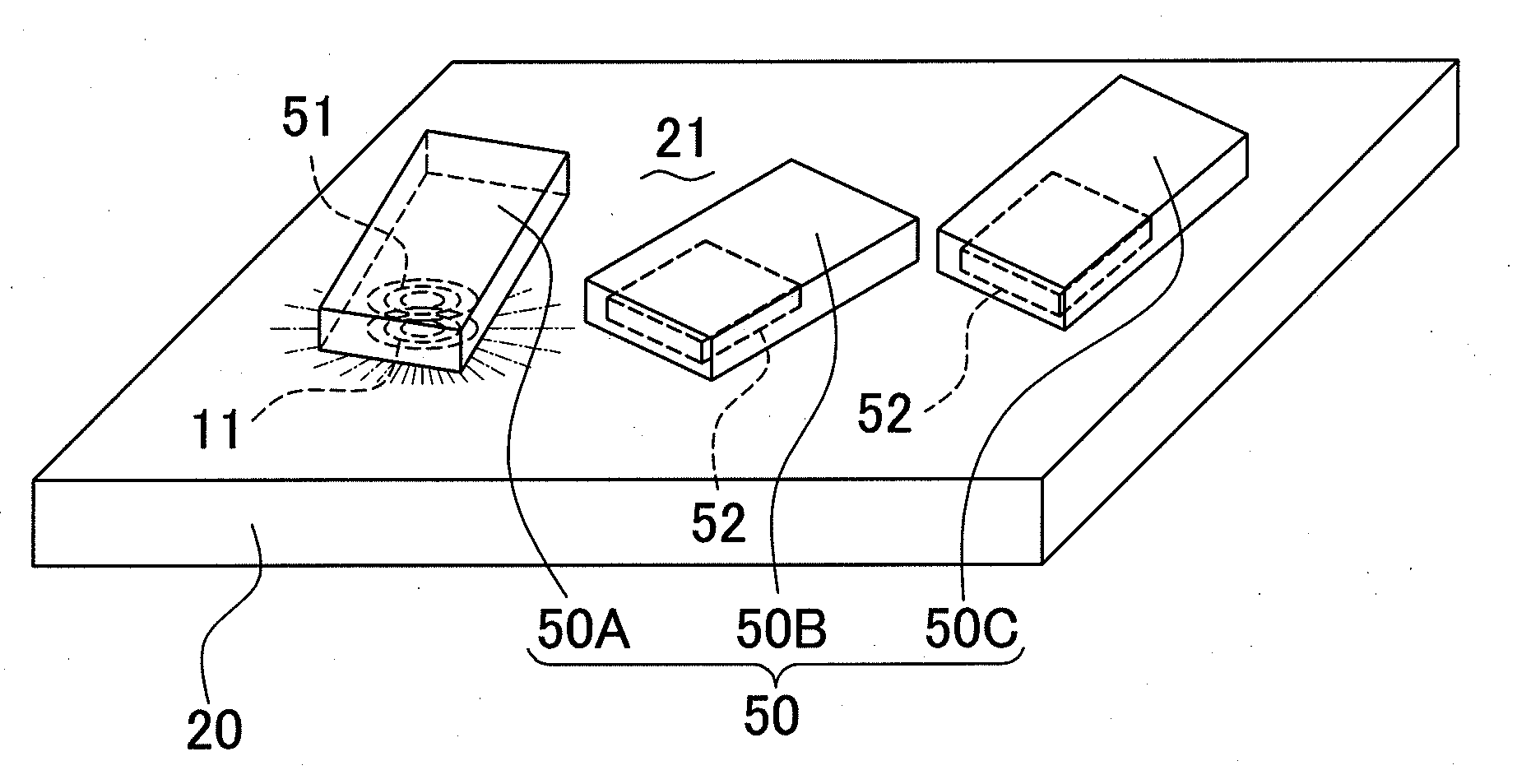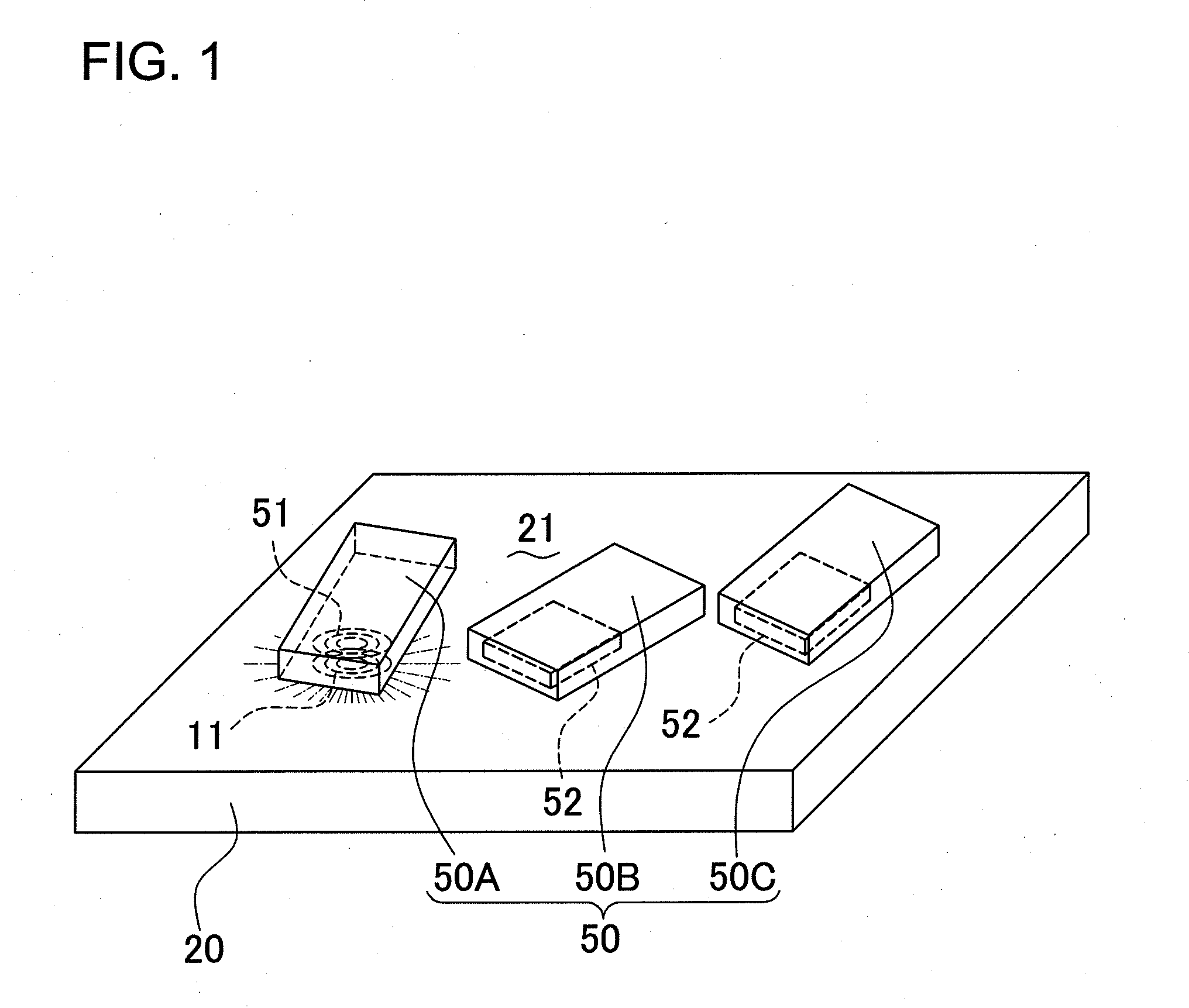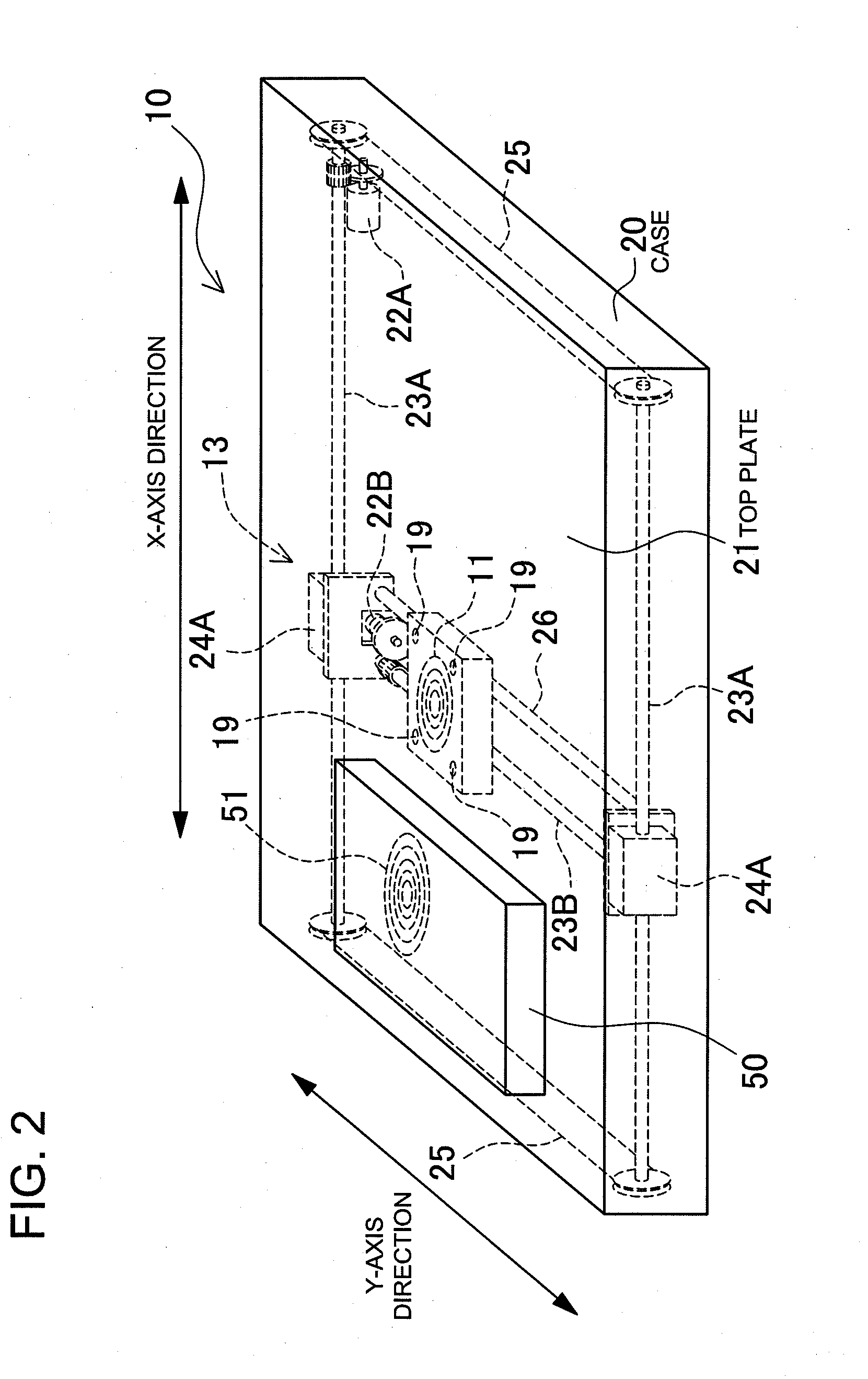Device housing a battery and charging pad
a battery and charging pad technology, applied in the direction of transformers, inductances, transportation and packaging, etc., can solve the problems of difficult to accurately transmit rapidly varying battery data in real-time, complex structure to transmit battery information from the battery-side to the power supply-side, etc., to achieve efficient battery charging, efficient battery connection or disconnection, and efficient power transmission
- Summary
- Abstract
- Description
- Claims
- Application Information
AI Technical Summary
Benefits of technology
Problems solved by technology
Method used
Image
Examples
Embodiment Construction
)
[0033]The following describes embodiments of the present invention based on the figures.
[0034]FIGS. 1-7 are schematic and diagrammatic views illustrating the structure and operating principles of the charging pad 10. As shown in FIGS. 1, 2, and 7, devices housing a battery 50 are placed on the charging pad 10, and the internal battery 52 is charged utilizing magnetic induction. A device housing a battery 50 contains a receiving coil 51 that magnetically couples with the transmitting coil 11, and a battery 52 that is charged by power induced in the receiving coil 51.
[0035]The device housing a battery 50 is provided with a modulator circuit 61 that changes the impedance of the receiving coil 51 according to internal battery 52 information. The charging pad 10 is provided with a detection circuit 17 that detects receiving coil 51 impedance changes made by the modulator circuit 61 to detect battery information via the transmitting coil 11.
[0036]The modulator circuit 61 is provided with...
PUM
| Property | Measurement | Unit |
|---|---|---|
| length | aaaaa | aaaaa |
| diameter | aaaaa | aaaaa |
| delay time | aaaaa | aaaaa |
Abstract
Description
Claims
Application Information
 Login to View More
Login to View More - R&D
- Intellectual Property
- Life Sciences
- Materials
- Tech Scout
- Unparalleled Data Quality
- Higher Quality Content
- 60% Fewer Hallucinations
Browse by: Latest US Patents, China's latest patents, Technical Efficacy Thesaurus, Application Domain, Technology Topic, Popular Technical Reports.
© 2025 PatSnap. All rights reserved.Legal|Privacy policy|Modern Slavery Act Transparency Statement|Sitemap|About US| Contact US: help@patsnap.com



